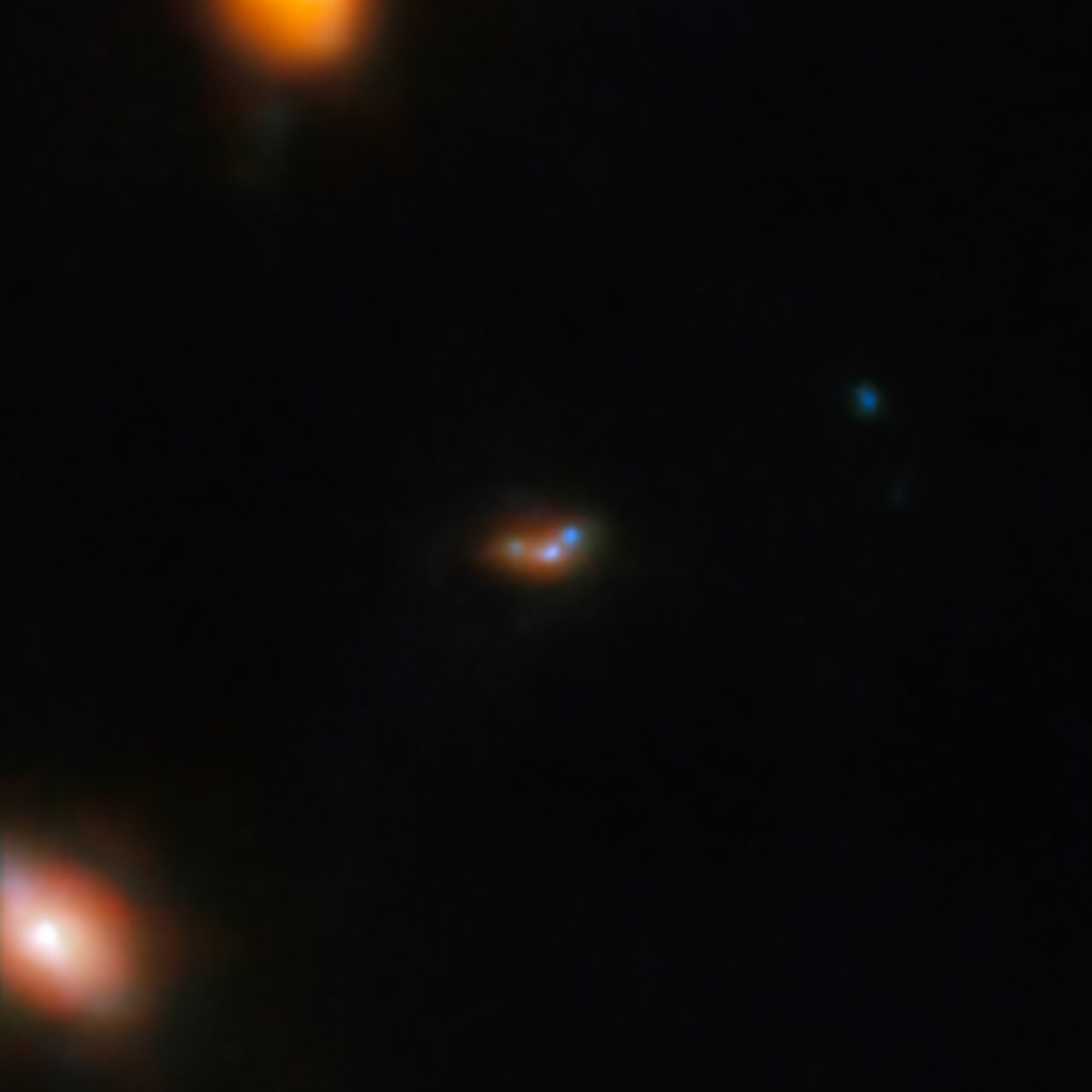About the Object
Coordinates
| Position (RA): | 14 20 8.52 |
|---|---|
| Position (Dec): | 52° 53' 26.48" |
| Field of view: | 0.08 x 0.08 arcminutes |
| Orientation: | North is 48.3° left of vertical |
Colours & filters
| Band | Wavelength | Telescope |
|---|---|---|
| Infrared | 1.15 μm | James Webb Space Telescope NIRCam |
| Infrared | 1.5 μm | James Webb Space Telescope NIRCam |
| Infrared | 2.0 μm | James Webb Space Telescope NIRCam |
| Infrared | 2.27 μm | James Webb Space Telescope NIRCam |
| Infrared | 3.56 μm | James Webb Space Telescope NIRCam |
| Infrared | 4.1 μm | James Webb Space Telescope NIRCam |
| Infrared | 4.44 μm | James Webb Space Telescope NIRCam |
Lyman-α emitting galaxy EGSY8p7 (NIRCam image)
This image shows the galaxy EGSY8p7, a bright galaxy in the early Universe where light emission is seen from, among other things, excited hydrogen atoms — Lyman-α emission. Webb’s high sensitivity picks out this distant galaxy along with its two companion galaxies, where previous observations saw only one larger galaxy in its place.
This discovery of a cluster of interacting galaxies sheds light on the mystery of why the hydrogen emission from EGSY8p7, shrouded in neutral gas formed after the Big Bang, should be visible at all. Astronomers have concluded that the intense star-forming activity within these interacting galaxies energised hydrogen emission and cleared swathes of gas from their surroundings, allowing the unexpected hydrogen emission to escape.
This close-up view of EGSY8p7 has been newly processed, making use of NIRCam data captured with seven different near-infrared filters.
[Image Description: A close-in view of three neighbouring galaxies. They appear as coloured blobs with bright, distinct cores. The image is mostly black, with a few unrelated galaxies visible nearby.]
Credit:ESA/Webb, NASA & CSA, C. Witten, M. Zamani (ESA/Webb)
About the Image
| Id: | weic2402b | |
|---|---|---|
| Type: | Observation | |
| Release date: | 18 January 2024, 11:00 | |
| Related releases: | weic2402 | |
| Size: | 1244 x 1244 px | |




